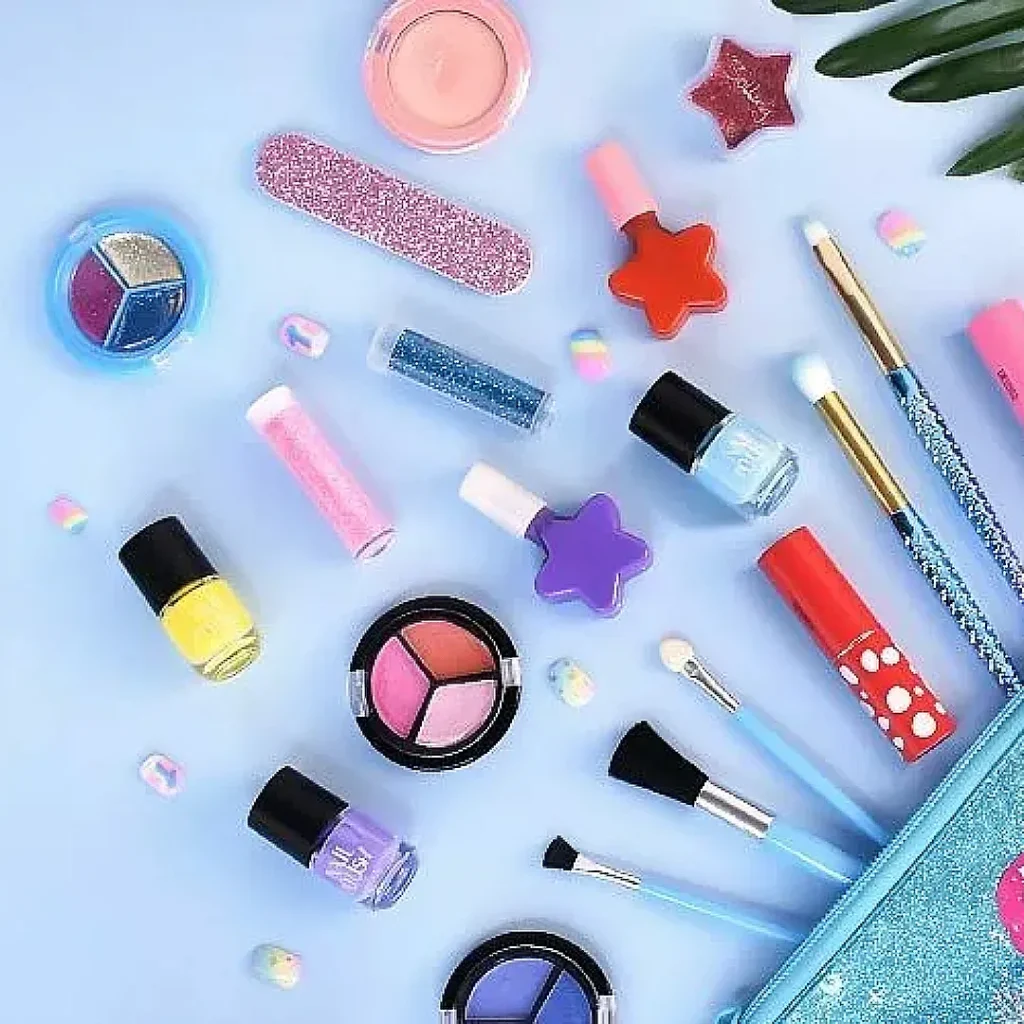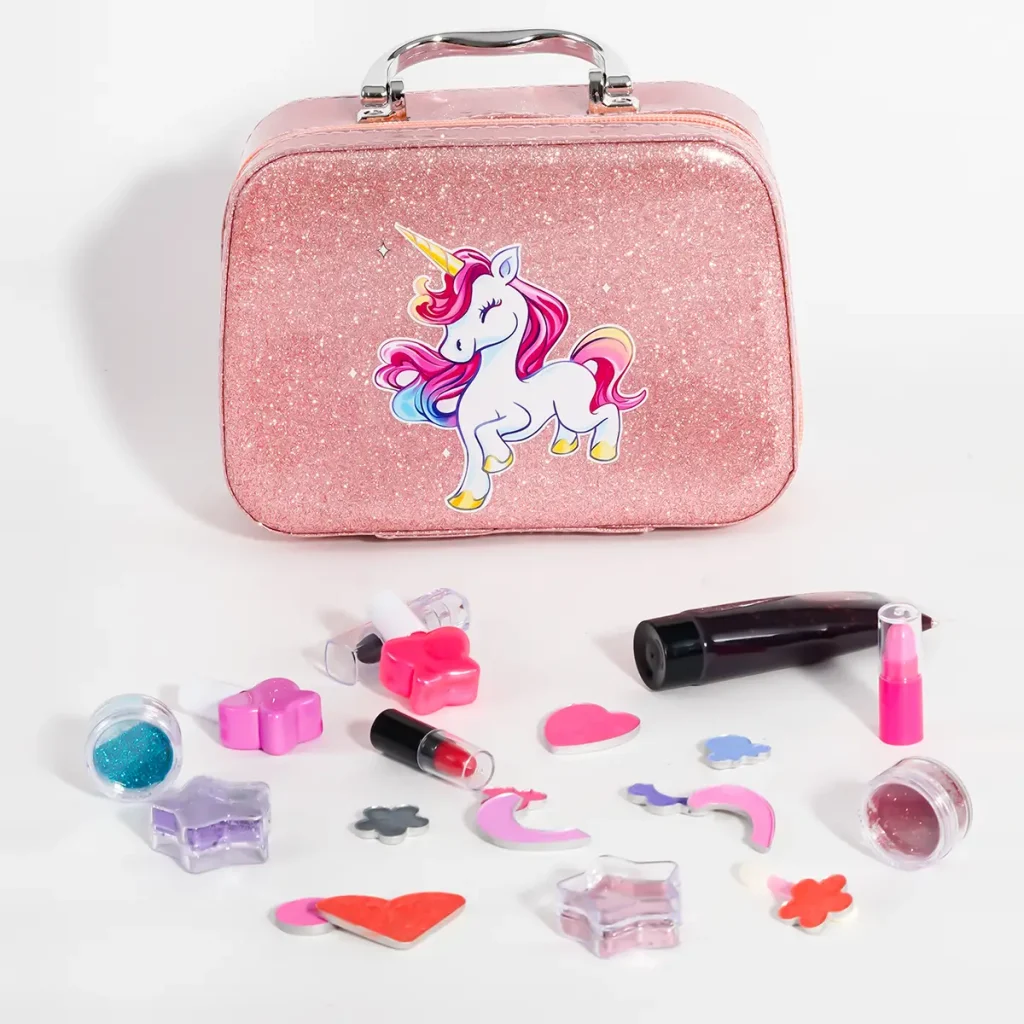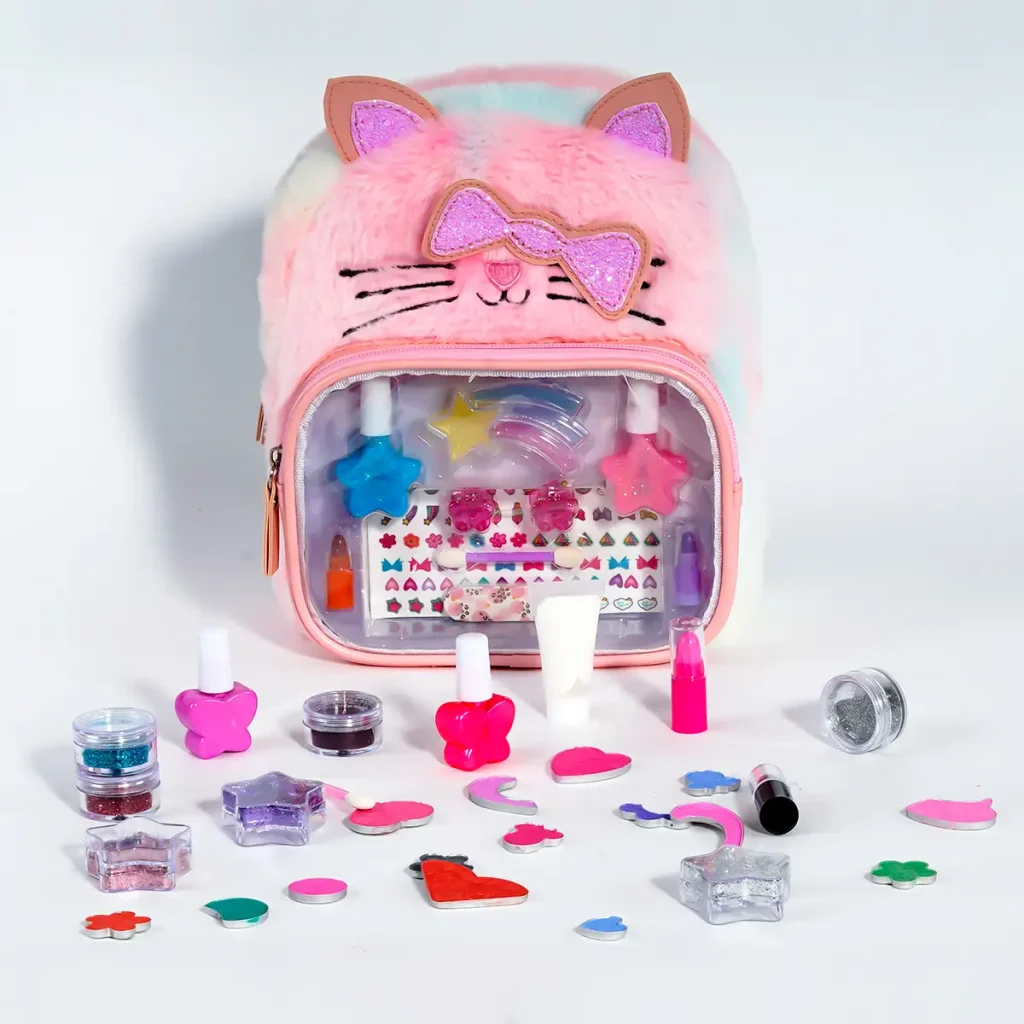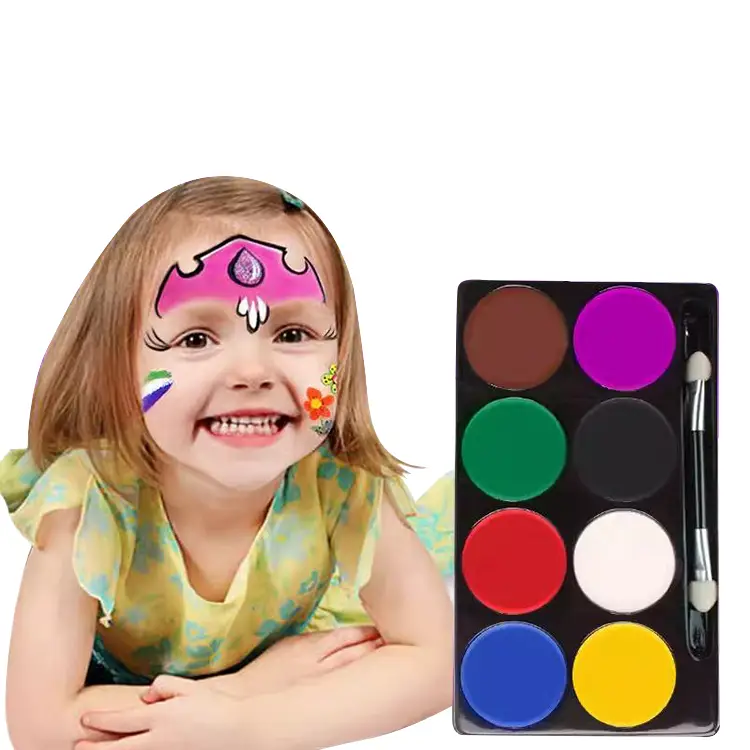How do you tell if a makeup product is water-based
Table of Contents
Wondering if your makeup is water-based? Learn to decode ingredient lists and test formulas at home with this science-based, easy-to-follow guide.
What Does “Water-Based” Mean in Makeup?
Water-based makeup has formulas where water is the main ingredient. This doesn’t mean it’s just water—it means the product starts with water as its base instead of oils or silicones. This foundation affects how the makeup feels, spreads, and interacts with the skin. You’ll often find water-based formulas in foundations, primers, and tints, especially those designed for a lightweight or breathable effect.
Defining Water-Based Formulas in Cosmetics
In cosmetic science, water-based means the product uses water (usually listed as “aqua” on the label) as the first and most dominant ingredient. It serves as a solvent, helping dissolve other ingredients like humectants, emulsifiers, and pigments. These formulas are often lighter and quicker to absorb compared to oil-based or silicone-based versions. However, “water-based” doesn’t always mean “all-natural” or “chemical-free.”
For example, a kid experimenting with their mom’s tinted moisturizer might notice it soaks in fast and doesn’t feel greasy. That’s often a clue—it’s probably water-based.
Common Ingredients Found in Water-Based Makeup
Besides “aqua,” other common water-soluble ingredients in water-based makeup include glycerin, butylene glycol, sodium hyaluronate, and panthenol. These ingredients help retain moisture, improve texture, or stabilize the formula. You might also see plant extracts or fruit-based infusions—these usually dissolve easily in water, making them popular choices for such formulas.
Reading the label can help. If water is listed first, followed by ingredients that don’t end in “-cone” or “-siloxane,” it’s likely water-based.
Differences Between Water-Based, Oil-Based, and Silicone-Based
Water-based products absorb quickly and often work well on oily or sensitive skin types. In contrast, oil-based makeup uses plant or mineral oils like jojoba, argan, or castor oil. These formulas are thicker and may create a glowy or dewy finish. Silicone-based makeup includes compounds like dimethicone or cyclopentasiloxane. These provide a smooth texture and a longer-lasting effect but can feel heavier.
A quick test? Swipe the product on your hand. If it dries fast and leaves no slippery or sticky feel, it’s probably water-based. If it sits on the surface or feels slick, it’s oil- or silicone-based.
Why It Matters: The Benefits of Water-Based Makeup
Knowing whether a makeup product is water-based helps you understand how it will behave on your skin. It’s not just a preference—it affects compatibility, wear time, and even how it reacts with other products in your routine. For example, applying a silicone primer under a water-based foundation can lead to patchiness or uneven texture. That’s a classic case of layering incompatible formulas.
Skin Compatibility and Breathability
Think of makeup like building blocks. If your base is water-based, it usually works best with other water-based items—like moisturizers, primers, and concealers. Mixing oil- or silicone-based products with water-based ones can cause separation, caking, or rolling (that weird pilling effect).
A teen once mixed their mom’s silicone primer with a water-based foundation before a school photo—and ended up with makeup that slid off by lunchtime. Matching formulas matters more than most people think.
Suitability for Children and Sensitive Skin
Water-based makeup tends to be less occlusive—it lets the skin “breathe” more easily. While this doesn’t make it allergy-proof, it might reduce the risk of clogged pores or irritation, especially for younger or more sensitive skin.
Children playing with makeup toy sets often mimic adult routines. If they’re using water-based products, there’s usually less residue left behind and fewer issues with sticky cleanup or lingering scents.
Environmental and Safety Considerations
Water-based makeup may dry faster, feel lighter, and give a more natural finish—but it might not last as long as silicone or oil formulas. That’s especially true in humid weather or on sweaty skin.
So if you need makeup that stays put all day under stage lights or at a dance recital, water-based might not always be the best fit. But if you’re heading to school or just trying makeup for fun, it often feels more comfortable.
How Do You Tell If a Makeup Product Is Water-Based?
Before putting anything on your skin, it’s smart to know what’s in it. Figuring out whether a product is water-based is a good first step. It tells you how the makeup will blend, how long it might last, and how it reacts with your skin or other products.
It’s not always printed in big bold letters, though. So how can you tell? You have to dig a little deeper.
Reading Ingredient Lists: What to Look For First
Start with the ingredient label. On any makeup product sold in stores, ingredients are listed from highest to lowest concentration. So the first few items matter most.
If water-based, the first word will usually be water or aqua (same thing, just different naming rules). If you see oils or silicones listed at the top—like dimethicone, cyclopentasiloxane, or mineral oil—it’s not water-based.
Tip: Avoid assuming based on packaging claims like “hydrating” or “refreshing.” Look for the actual ingredients.
Identifying Water or Aqua as the First Ingredient
This is your easiest giveaway. If the label starts with water (aqua), that means water is the main ingredient. This is common in toners, foundations, setting sprays, and most makeup for kids.
Many toy makeup products also begin with water to keep them easy to wash off. Just don’t stop at the first ingredient—check the next few to see if it’s backed by other water-soluble components or thickening agents like glycerin or carbomer.
Key Signs in Texture, Finish, and Absorption
You can often feel the difference. Water-based makeup is usually:
- Light and thin in texture
- Dries down quickly
- Leaves a clean or slightly tight feeling
It absorbs fast and doesn’t feel greasy. A foundation that vanishes into the skin without stickiness is likely water-based. Products that feel slick, heavy, or shiny are often oil- or silicone-based.
Understanding INCI Names and Cosmetic Labeling
Ingredient names in cosmetics follow INCI (International Nomenclature of Cosmetic Ingredients) standards. That’s why “water” often appears as aqua on global labels—it’s the same thing.
If you want to understand what’s in your makeup, learning to read INCI labels helps you get past the marketing fluff.
How to Read INCI (International Nomenclature of Cosmetic Ingredients)
INCI names follow strict rules and are listed by concentration. Water-based products will show aqua first. Don’t expect simple terms like “rose water” or “aloe base”—you’ll need to look for the scientific names.
You might also see natural-sounding names like butyrospermum parkii (that’s shea butter) or tocopherol (vitamin E). Don’t let them distract you from spotting water at the top.
Common Water-Soluble Ingredients to Recognize
Water-based products often include:
- Glycerin
- Sodium hyaluronate
- Panthenol
- Carbomer
- Propylene glycol
These dissolve in water and support hydration, spreadability, or shelf life. If you see several of these in the first 5–7 ingredients, it’s a strong hint you’re holding a water-based item.
Avoiding Confusion Between Marketing Terms and Real Content
A product can be labeled as “hydrating,” “refreshing,” or even “non-greasy” and still be oil- or silicone-based. These are marketing phrases, not ingredient indicators.
Some products say “water-infused” but still use oils or silicones as the main base. Always go back to the label and look at the order of ingredients.
How to Test Makeup at Home for Water Base
Let’s say you can’t read the label or the product is from a toy kit with vague info. Don’t worry—you can still run a few safe, simple tests at home.
Simple Water Solubility Test Using Cotton Pads
Place a drop of the product on a cotton pad soaked with warm water. If it blends and lifts off easily, it’s probably water-based. If it resists or beads up, it may contain oil or silicone.
You can also rinse the product under running water. A water-based product often dissolves or thins out. Oil-based ones tend to smear or sit on the surface.
Observing Layer Separation in Liquid Products
Let a bottle sit undisturbed for a few hours. If the product separates into layers—and one of them looks like clear water—it might be water-based. Shake it and see if it re-emulsifies.
Water-based products tend to re-mix easily. Oil- or silicone-heavy ones may leave an oily ring or require vigorous shaking.
Smell, Feel, and Evaporation as Clues
Water-based makeup usually has little or no scent. It may feel cool and light to the touch. When you apply it to your hand, it evaporates quickly—leaving a dry or slightly tight finish.
Oily or creamy products often stay shiny and take longer to dry. If the product leaves behind a slick film, it’s likely not water-based.
Water-Based Makeup vs. Other Base Types
Not all makeup plays by the same rules. The “base” tells you what holds everything together—water, oil, or silicone. Each one acts differently on skin. Knowing which one you’re working with can make or break your routine.
Wear Time and Finish Differences
Water-based makeup dries fast and feels light. But it may fade quicker, especially if skin gets oily. Silicone-based makeup sticks better and blurs skin. Oil-based makeup often gives a glow but can smudge more easily.
Layering and Compatibility with Other Products
Mixing base types can lead to patching or pilling. Water-based works best with other water-based products. If you layer a silicone primer under a water-based foundation, it might slip or flake. Match your layers for best results.
Pros and Cons of Each Type Based on Use
- Water-based is lightweight, breathable, and easy to remove. But it may wear off faster.
- Silicone-based is smooth and long-lasting, but can clog pores.
- Oil-based adds glow and moisture but may not suit oily skin types.
Ideal Use Cases for Water-Based Makeup Products
Water-based makeup isn’t for everyone, all the time. But in certain settings, it really shines. From kid-safe products to summer skin, here’s where it makes the most sense.
Everyday Wear for Lightweight Coverage
For daily looks, water-based foundations and concealers keep things simple. They feel light and don’t overwhelm your skin. Great for students, office wear, or a quick grocery run.
Use in Hot or Humid Climates
Heavy makeup can melt fast when it’s hot out. Water-based makeup absorbs fast and feels cool. It may not last all day without setting spray, but it won’t feel sticky or greasy in the heat.
Kid-Friendly or First-Time Makeup Use
Water-based makeup is easy to wash off, non-greasy, and often less irritating. That’s why it’s used in toy makeup kits and early-stage beauty sets. Perfect for playdates or testing looks for the first time.
Common Myths About Water-Based Makeup
There’s a lot of talk online about water-based makeup. Some of it’s true. A lot of it isn’t. Let’s clear up a few of the most common misunderstandings.
“Water-Based Means Less Effective”
False. Water-based doesn’t mean weak. Many high-end brands use water as a base to make lightweight, blendable formulas. It may not last as long as silicone—but that doesn’t make it worse.
“All Natural Products Are Automatically Water-Based”
Not true. Some natural products use plant oils or waxes as their base. Just because it says “organic” or “natural” doesn’t mean it’s water-based. Always check the ingredient label.
“Water-Based Products Don’t Work on Oily Skin”
Actually, they might work better. Water-based makeup avoids adding more oil to already oily skin. When paired with a good setting powder or spray, it can stay put without clogging pores.
How Manufacturers Indicate Product Base in Packaging
Some clues are easy to miss. The way a makeup product is packaged, labeled, or described often hints at its base—but you have to know what to look for. Not every product says “water-based” outright.
Labels, Icons, and Keywords to Look For
Look for words like “hydrating,” “aqua-based,” or “water-infused.” These often suggest a water base. Ingredient lists that begin with “Aqua” or “Water” are strong indicators. Some brands may include small droplet icons or eco-style labeling to imply water content—but that’s not a guarantee.
Words like “oil-free” or “non-comedogenic” may also suggest a water-based formula, but you should still check the ingredient list to confirm.
Country-Specific Regulatory Practices
In the U.S., the FDA doesn’t require cosmetic labels to state the product’s base. Brands list ingredients in descending order, but how they promote the base is up to them. In the EU, INCI naming rules apply, but again, there’s no rule forcing brands to call a product “water-based.”
Some Asian markets, like Japan or Korea, often highlight the base more clearly—especially for skincare hybrids. Reading the fine print is essential across borders.
When to Contact the Manufacturer for Clarification
If the label feels vague or ingredients are unfamiliar, don’t guess. Most reputable brands have customer support or product specialists. Send a short message asking, “Is this product water-based?” They may offer a breakdown or point you to a detailed product sheet.
Sometimes, especially with indie or artisan brands, transparency is higher when you ask directly. It shows you’re paying attention—and sometimes, it even helps brands improve their labeling.
Conclusion
Knowing if a makeup product is water-based starts with reading labels, understanding ingredients, and testing at home. Whether you’re a beginner or a careful user, being informed helps you choose what works best for your skin, your style, and your routine.
FAQ
Yes, but it may not always give the best results. Water-based makeup may not adhere well to silicone-based primers due to differences in formulation. This can lead to patchiness, sliding, or uneven coverage. For smoother application, it's generally better to match water-based makeup with a water-based or gel primer to maintain product compatibility.
Water-based makeup can be a good choice for acne-prone skin because it typically contains fewer heavy oils and silicones that may clog pores. However, "water-based" doesn't always mean non-comedogenic. Always check for ingredients like isopropyl myristate or lanolin, which might still irritate sensitive or breakout-prone skin.
Water-based products can be more prone to microbial growth if not properly preserved, which may shorten their shelf life. However, most commercial formulas include preservatives to prevent spoilage. Be sure to check expiration dates and avoid storing water-based products in warm, humid environments to extend their longevity.
Mixing water-based makeup with oil- or silicone-based products often leads to separation or poor blending. They don’t always chemically combine well. For example, a water-based foundation may pill if layered on top of a silicone-based moisturizer. Stick with products that share the same base for a smoother, more stable finish.
Water-based foundations may feel dry over time because they evaporate faster than oil- or silicone-based formulas. Without added emollients, they may not lock in moisture as effectively. To combat dryness, prep your skin with a hydrating moisturizer and avoid applying too much powder on top, which can further dry the skin.











